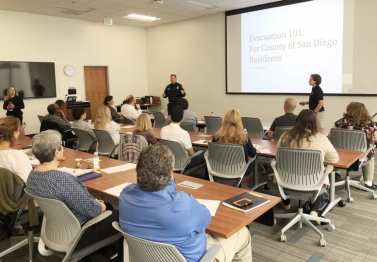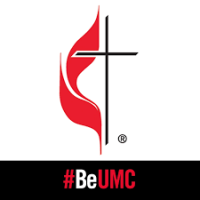
In a local emergency, people who don’t speak English or Spanish may not understand urgent information put out by government agencies and media. This is a challenge faced by public health departments and local emergency managers throughout the country, but San Diego County is trying out a solution by partnering with a broad network of trusted community organizations.
It works like this: the County provides critical information for the public on the Partner Relay Network web page, an online communication platform which is updated during an emergency. Community agencies such as churches, nonprofit organizations and refugee resettlement organizations can access the information and translate it for the people they serve and disseminate it to their subscribers. The organizations can also relay information back to the County.
“Working with trusted community agencies to deliver information to our limited-English proficient communities during emergencies is a national best practice. San Diego County is one of the first Counties using this approach,” said Holly Crawford, director of the Office of Emergency Services. “It was used during the Lilac Fire in December 2017 when more than 77,000 residents were under an evacuation order. Due to the notifications from the Partner Relay, community leaders served as conduits of emergency information to numerous non-English speaking communities.”
The Partner Relay Network has members who help translate emergency information for people who speak Tagalog, Chinese, Korean, Arabic, and Vietnamese, Somali and Karen as well as a few other languages.
This is one of many County efforts to reach vulnerable communities where language is a barrier to getting critical, and potentially lifesaving, information.
San Diego County started its program in 2013 after County emergency services and public health staff met with community leaders to develop a plan for San Diego. Since then, more than 300 people representing these trusted partner agencies have joined the Partner Relay and have agreed to assist in public communication during disasters and public health emergencies, said Justine Kozo, of Public Health Services.
Nawal Alkatib, a program supervisor at San Ysidro Health Clinic in El Cajon, said being part of the Partner Relay Network has helped them to provide information to the Arabic community, some of whom don’t speak English or watch local news.
During the 2011 blackout that affected the entire county, the community immediately reached out to Alkatib’s office to try to find out what was happening and what they needed to do to cook, to try to keep food from spoiling. So, when Alkatib learned about the Partner Relay Network, she was eager to join.
“During the Lilac Fire, it was a little bit far away but it affected our community too,” she said. “People called and said they had relatives in Oceanside or Escondido and they’d say, ‘I can’t reach them’ or ‘how far is it?”
Alkatib said they are now able to translate information that pertains to their community, and post it in places where the community goes such as the clinic, Arabic stores or restaurants, churches or mosques. They also answer phone calls as they come in, she said. New information is then relayed person-to-person throughout families and friend groups because it is a very tightknit community.
Patricia Pinzon, a Consul for Community Affairs for the Mexican Consulate in San Diego, said her office had started an emergency email and text system to reach residents who may not be connected with television or radio news. But prior to the Partner Relay system, they had to work hard to track down information that might be relevant. Now, they need only look at the County’s Partner Relay web page for updates, she said.
“So when something like a wildfire or an earthquake or a national disaster happens, we can send out important information to our community with useful information like shelter in place,” Pinzon said. “It was very useful because they were constantly updating that system and we were able to just translate and send it away to the community.”
According to data collected by the California Health Interview Survey, more than 400,000 people in San Diego County speak a language other than English and many of those same respondents were also not prepared for an emergency. Reaching non-English speaking people in an emergency is something the County Office of Emergency Services addresses with Spanish speaking communities through emergency Spanish translators, a Spanish SD County Emergency web page, a Spanish Emergency App, and a Spanish Twitter account.
Translating information is not as easy as using a computer software program because more often than not the translations are literal and may not make sense.
The County Office of Emergency Services, in partnership with Public Health Services, conducts emergency preparedness trainings for agencies and organizes communication drills for Partner Relay members, said Laura Curvey, emergency services coordinator for the Office of Emergency Services.
The County continues to seek out trusted community leaders to help translate information for non-English speaking communities. To learn more about the Partner Relay project, the County is holding a Partner Relay Public Health and Emergency Preparedness Training for agencies servicing immigrant, refugee and newly arrived communities on Tuesday, June 12. The training will be held from 9 to 11 a.m. at the Price Charities Building, 4305 University Ave., Suite 640 in City Heights. Residents may also contact Justine Kozo at justine.kozo@sdcounty.ca.gov.

















Recent comments